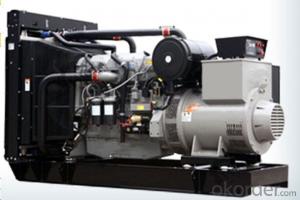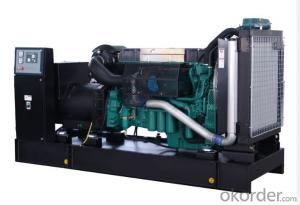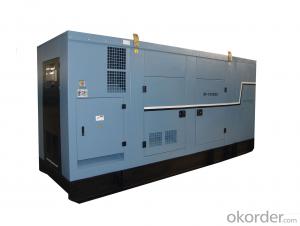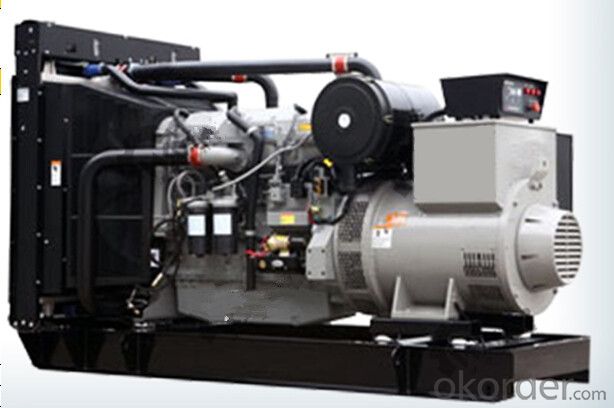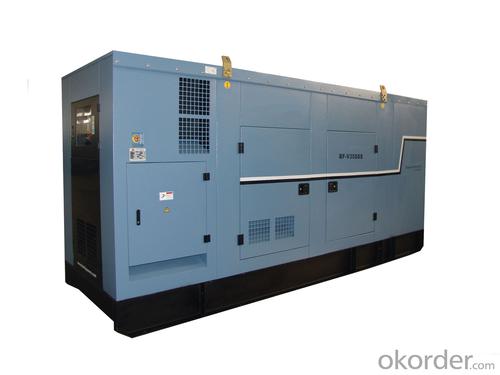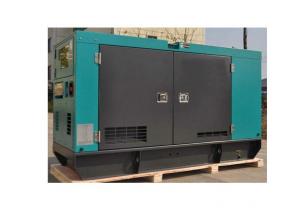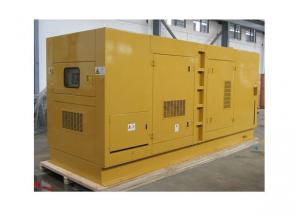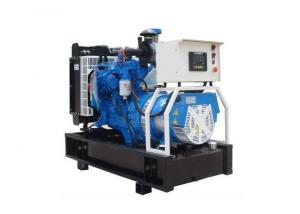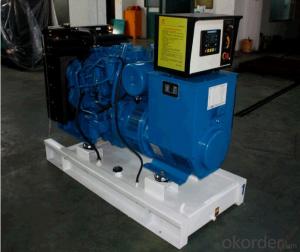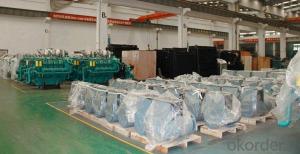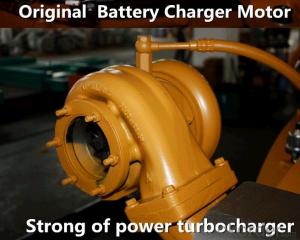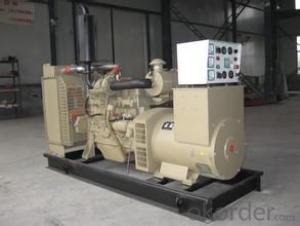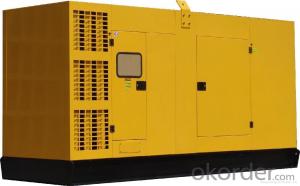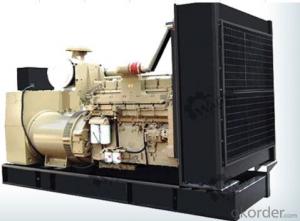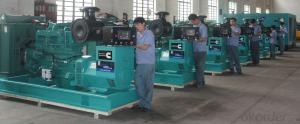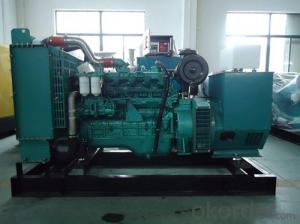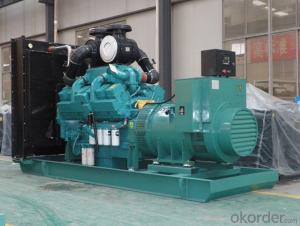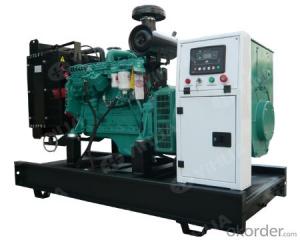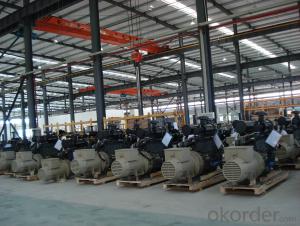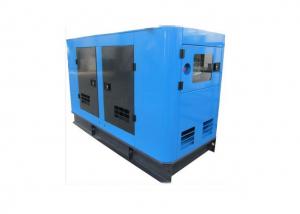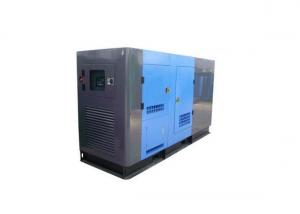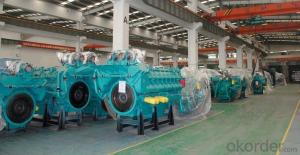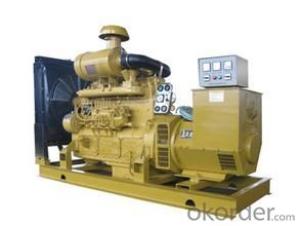Diesel Generator Perkins 320kw/400kva
- Loading Port:
- Shanghai
- Payment Terms:
- TT OR LC
- Min Order Qty:
- 1 unit
- Supply Capability:
- 100 unit/month
OKorder Service Pledge
OKorder Financial Service
You Might Also Like
Product Description
A diesel generator is the combination of a diesel engine with an electric generator (often an alternator) to generate electrical energy. This is a specific case of engine-generator. A diesel compression-ignition engine often is designed to run on fuel oil, but some types are adapted for other liquid fuels or natural gas.
Diesel generating sets are used in places without connection to a power grid, or as emergency power-supply if the grid fails, as well as for more complex applications such as peak-lopping, grid support and export to the power grid.
Main Product Features:
Engine (Perkins Model: 2206A-E13TAG5 )
Radiator 40`C max, fans are driven by belt, with safety guard
24V charge alternator
Alternator: (Marathon Model: MP-320-4), single bearing alternator IP21, insulation class H/H
Absorber
Dry type air filter, fuel filter, oil filter
Main line circuit breaker
Standard control panel
Two12V batteries, rack and cable
Ripple flex exhaust pipe, exhaust siphon, flange, muffler
User manual
Product Specifications:
1. Manufacturer / Model: Perkins Model: 2206A-E13TAG5,4 stroke
2. Air Intake System: Turbocharged, air-to-air charge cooling
3. Fuel System: /
4. Cylinder Arrangement: 6 in line
5. Displacement: 12.5L
6. Bore and Stroke: 130×157mm
7. Compression Ratio: 16.3:1
8. Rated RPM: 1800rpm
9. Max. Standby Power at Rated RPM: 406KWB
10. Governor Type: Electronically
FAQ:
Q1: What is Prime Power and Standby Power Rating?
A1: Prime Power (PRP): Prime power is available for an unlimited number of annual hours in variable load application, in accordance with GB/T2820-97(eqv ISO8528); A 10% overload capability is available for a period of 1 hour within a 12-hour period of operation. Standby Power Rating (ESP): The standby power rating is applicable for supplying emergency power for the duration of a utility power interruption. No overload, utility parallel or negotiated outage operation capability is available at this rating
Q2: How do we guarantee the quality of our products?
A2: We have established an advanced quality management system which conducts strict quality tests at every step, from raw materials to the final product.
Q3: How soon can we receive the product after purchase?
A3: Within three days of placing an order, we will begin production. The specific shipping date is dependent upon international and government factors, but is typically 30 to 40 workdays.
Q4: What is your after sales service?
A4: CNBM provides a full line of brand new and high quality products. Each and every unit is strictly factory tested. Warranty is according to our standard conditions: a, 15 months, counted on the day CNBM sold to the first buyer; b, One year after installation; c, 1000 running hours (accumulated); subject to the earlier one. Service and parts are available from CNBM or distributors in your location.
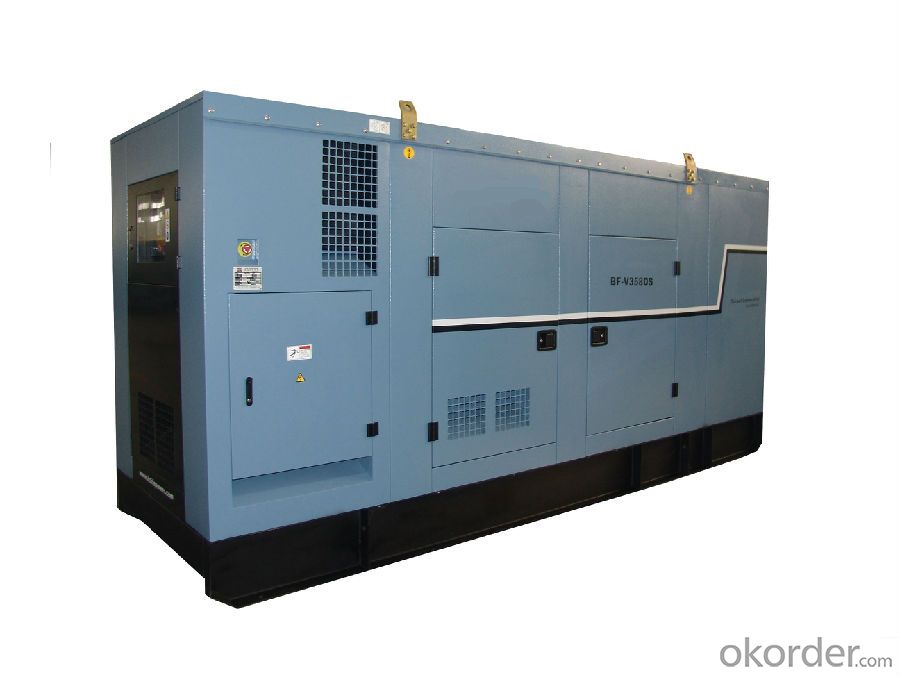
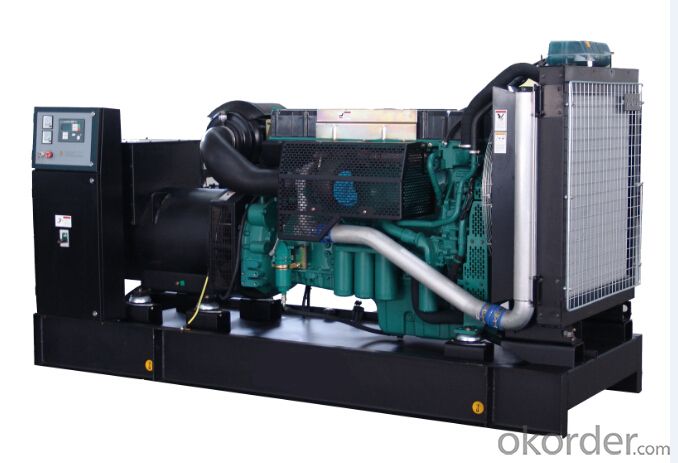
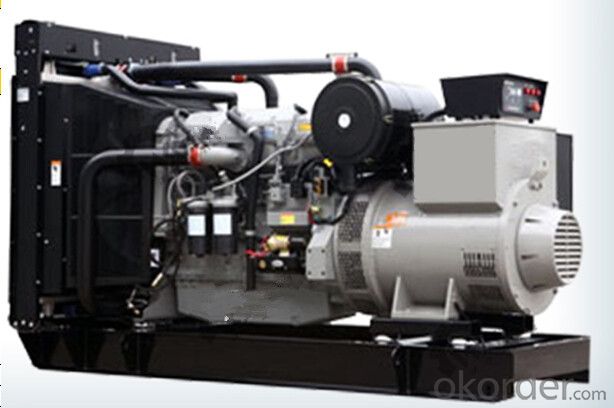
- Q: Hello friends.I had to make a list of equipment for a civil construction company. Among the equipment were generator and diesel engine. For generator, i am very clear that it is used for alternate power generation in case of electricity un availability. What is the purpose of diesel engine? Where is is used? Guide me please.
- Just about every piece of equipment powered by an internal combustion engine found at a civil construction site is powered by a diesel engine. Things such as scrapers, loaders, track hoes, dozers, dump trucks, rollers, and even electric generators are powered with diesel engines.
- Q: I recently purchased a book on how to make a hydrogen generator that mentions either gas or diesel. However common sense tells me that a diesel engine requires some sort of lubrication such as cooking oil etc. I have tried to send a email but cannot get an answer. Does anyone out there know if hydrogen will work in a diesel engine without burning the valves out quickly.
- The engine could could be thoroughly redesigned. Diesel engines paintings as a results of fact whilst compressed, gasses warmth up. whilst they warmth up sufficient they explode. With the engines of today, the hydrogen could explode way too early and not produce any smart skill. Hydrogen could be run through a gas engine although- much less exchange ought to be achieved. BTW, the place will this hydrogen be coming from? maximum hydrogen today comes from organic gasoline, which could be utilized in diesel engines.
- Q: I know in some cases Electric companies will buy energy from someone who's solar panel's/wind turbines are overproducing. I think the system's have to be properly grid tied, i.e. either installed by or inspected by someone from the power company. I know that they don't pay much, but if you had a diesel generator running on waste vegetable oil.like if you made an arrangement with a restaurant to pick up their waste oil for them, it would be nice to be able to do so on a regular basis instead of going to them every so often saying Hey, I ran out of oil, I need some more. I guess I'm specifically asking about AEP. (American Electric Power) I live in Findlay, Ohio. I was on their website but couldn't find the answer to this question. Thanks!
- Yes, you can sell energy to the grid but it's often not cost-effective. You have to look at your equipment and operation cost, as well as the cost per kWh that your utility pays. Also, WVO is not as easy or free to come by as it used to be, as demand is now much higher. Restaurants usually don't give away their waste oil for free any more, as fuel companies now pay restaurants to pick up their used cooking oil. You can buy grid-tie inverters that plug into the wall outlet for reasonably small amounts of generation (about 1500 watts or less). For larger amounts of generation, you'll want a professionally-installed inverter and meter. The cost of electricity is so inexpensive per kWh that even if you did manage to source free WVO, the income from selling the electricity likely wouldn't even cover your costs to set up and maintain the generation equipment. Your system would also likely produce more emissions per kWh than the utility generation stations. You may have to deal with legislation for the emissions and/or noise, depending on how populated your area is.
- Q: I know that various types of locomotive's produce different amount of horse power. Here's the question: A single locomotive (any type) about what would be the average speed it could gain in 0 to 4 seconds on take off. Any smart A** answer will be reported for abuse, Thank you.
- That's an interesting question. They vary so much, dont know if there is an average speed that would be of any relevance. I cant really improve on what has been said except to add a few comments. as you might have guessed acceleration, all you can possibly get is very important at times. Newer locomotives have taken most of the fun out of switching, too much computer controls. With the older ones, that is what made the difference between just an engineer and a hoghead. 8 throttle (all you got) full independent brakes, relaese the brakes and close the generator field switch all at once was about the quickest move, not sure the speed you would get in 4 seconds but it would be too fast for a switchman to get on. When I started on the Milwaukee in the early 70's, we still had the old electrics. If a switchman started getting cocky an engineer would make him a bet, he would say you stand right here at the front of the engine and i will take off, if you can catch the rear footboard I'll give you $10.00. With a light engine he couldnt do it, those things took off like a rocket, they didnt have to build up any amperage waiting for the deisel engine to rev , the full line voltage was immediatly available overhead. P.S., this has been very difficult for me not to be at least a tiny little bit of a smarta**, takes a lot of self control. LOL
- Q: How do they supply their own electricity? I know recently they have moved to solar energy, but am curious as to what else they do.
- They have various diesel generator power houses set up around the islands.
- Q: I was also wondering what you but in them for them to work (gas, electricity etc.)
- Well just like electricity entering your house from the power company, the power from The power from your gas generator is the same thing. How much you run the generator is the same as running your light Or treadmill. However since power from the company is more steady and subsides, it's cheaper to be on the grid than to generate your own electricity especially with today's high gas prices.
- Q: i mean from off state to ON State,the amount of diesel it reqiures to burn out.
- the injection systems only variable is for the control of rpms during operation. during the start up process rpms are less than operation. yet the system delivers the same amount of fuel as the lowest setting. the fuel system, much like any other machine, is a constant. feed rate and pipe i.d. do not change magically. to throw in more fuel than the cyclinder can take would be destructive. variances can occur during hard starting situations (cold climates). this is the same as the choke on a car. diesels do not have this as they employ whats known as glow plugs which are essentially little plugs inside the cyclinders that preheat the chambers making it easier to start. since locomotives do not use this technique, this is why you will see them idling when not being used in a cold environment. in essence, its a royal b***h to start one when cold. never the less, to accurately know the fuel consumption rate (gph) at start up, you will have to contact the manufacturer to see if these figures are available. highly unlikely they would have these figures as opposed to actual operational gph which is where the do their testing.
- Q: I know a train runs on an electric engine powered by a diesel generator. Would something like this be feasible for cars?
- It really isn't the best way to go. Anytime you convert energy, some efficiency is lost. It is more efficient to propel the car directly with the engine, rather than propelling the car with an electric motor that is powered by a generator powered by the engine. Despite this loss of efficiency, this setup is appealing for use in trains because of their heavy loads. To drive a train directly with a diesel engine requires a massive transmission. Designers ran into problems with the transmission gears breaking due to the massive forces associated with moving a train. Instead, they propel the train with electric motors, which require no transmission. But the motors require power, so they use diesel powered generators. So there you have it. The diesel/electric setup is not appealing for cars, because stresses are low enough that a normal transmission can be used, and there is more efficiency by driving the car directly by the piston engine. The diesel/electric setup is appealing for trains because it eliminates the need for a transmission, which is bulky and prone to breaking.
- Q: I planned that the factory be fully mechanised. Public power supply is very poor. I wanted to purchase diesel generators but i have been advised by a friend that solar generators are more cost effective. Is solar a good source of energy to power such a factory?
- Yes, it can be fully solar. Very power comsuming factories are autonomous. If you dont find how to, if you want e-mail me and i will put you in touch with some companies. For your info, some companies not only are autonomous, they resell power while they dont use it.
Send your message to us
Diesel Generator Perkins 320kw/400kva
- Loading Port:
- Shanghai
- Payment Terms:
- TT OR LC
- Min Order Qty:
- 1 unit
- Supply Capability:
- 100 unit/month
OKorder Service Pledge
OKorder Financial Service
Similar products
Hot products
Hot Searches
Related keywords
